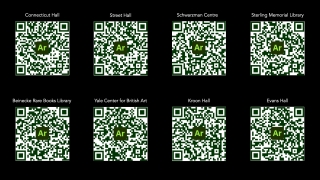Henry Fellow at the Yale School of the Environment
Class of 2025
Environmental Communications
Keeling Campus
Keeling Campus
By Isobel Laughton
This is a series of augmented reality sculptures representing historical carbon dioxide levels, integrating concepts such as non-linear representations of time, institutional contexts, and technology-mediated perception. The sculptures are opaque orbs placed around the Yale campus that represent information from the Keeling Curve – a scientific graph showing the evolution of carbon emissions over time. Each orb is situated in front of a historical building at Yale. The opacity and saturation of each orb corresponds to the carbon dioxide level and global temperature at the point in time when each building was established. Therefore, the orbs collectively communicate the increase in carbon dioxide emissions over time. Keeling Campus doesn't dictate opinions or arguments but instead presents visual information designed to spark curiosity, prompt questions, and trigger exploration.

Isobel is a creative climate communicator exploring how strategic engagement can enhance the impact of organisations and movements working for environmental change. Her work bridges psychology, sustainability, and the arts, grounded in the belief that communication is the foundation of collective efficacy.
Isobel is currently the Henry Fellow at Yale, affiliated with the School of the Environment, where she’s studying Strategic Environmental Communications and collaborating on a climate art exhibition at the Swiss Institute Gallery in New York through an Exhibition Design course. She also works at the Yale Program on Climate Change Communication and supported the Environmental Film Festival at Yale as part of the marketing team.
Previously, she earned an MSc in Sustainability, Enterprise, and the Environment at Oxford, developing an interdisciplinary view of climate solutions across economics, law, finance, and behaviour. Her master’s dissertation focused on how policymakers evaluate different types of climate policy, building on her BA in Experimental Psychology, where she explored how people think and feel about themselves, others, and the world around them. She began her academic journey with an Art Foundation in Visual Communication and Graphic Design.
Across all her work, she’s driven by a commitment to inclusive climate engagement and creative collaboration—finding new ways to connect people, ideas, and disciplines in pursuit of a more just and sustainable future.
